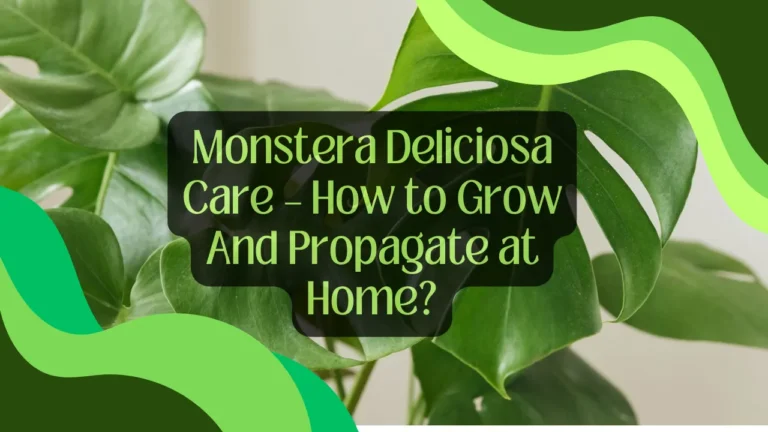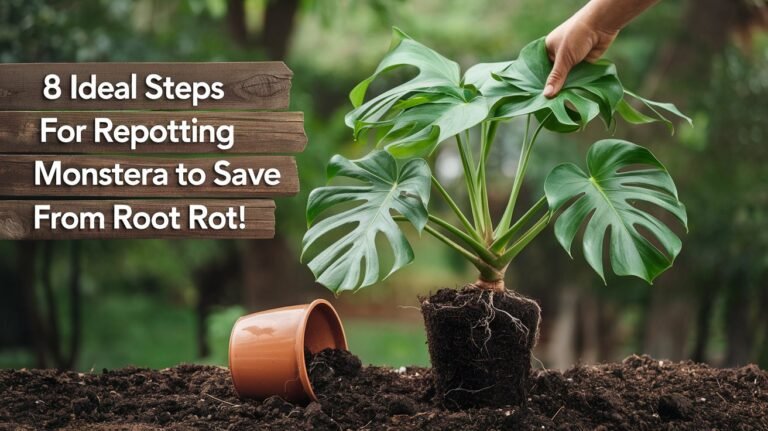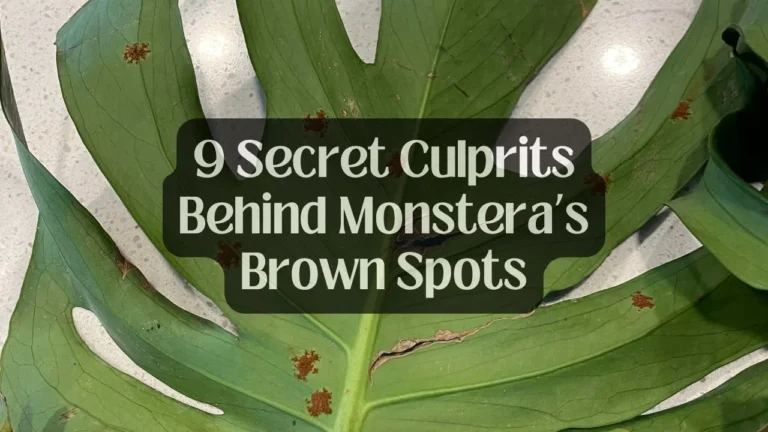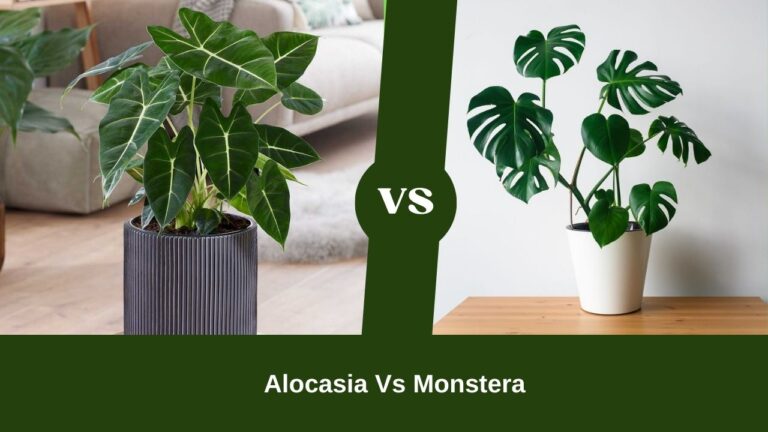Are Monsteras Poisonous to Pets? Mildly Toxic But Safe

Monsteras are popular houseplants prized for their lush foliage. But are they safe for your furry or feathered friends?
Monsteras are mostly not harmful. But still, if I have to tell in specifically, Monsteras contain calcium oxalate. These crystals can irritate the skin, tongue, or belly of your pets. But they’re unlikely to cause serious harm.
This article dives into the hows and whys of Monstera’s mild toxicity and equips you with the knowledge to create a safe and stylish pet-friendly home. Keep on going!
What’s the Difference Between Poisonous and Toxic? Are Monstera Toxic or Poisonous to Pets?
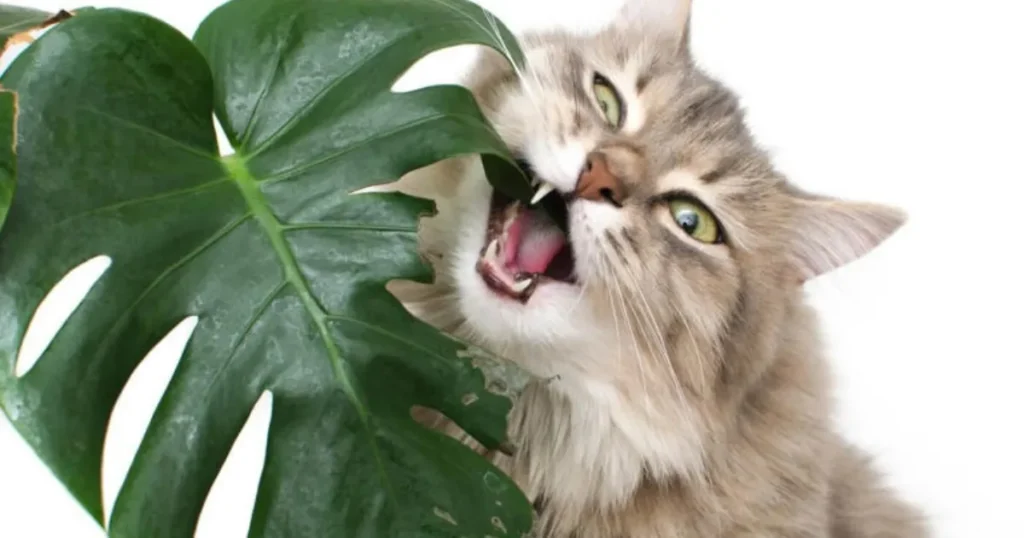
Let’s start by clarifying these two terms that are frequently confused. Let me tell you what’s the base difference between poisonous and toxic.
According to the Oxford Dictionary, something is poisonous if it causes illness or death. For example, bleach, when ingested or absorbed into the body. Meanwhile, toxic refers to poisons produced biologically by plants or animals. To further illustrate, all toxic plants are poisonous, but not all poisonous plants are toxic.
Some plants may be poisonous due to absorbing man-made chemicals from contaminated soil or water rather than producing their own biological toxins.
Okay, so here’s the good news: Monsteras are not super toxic like some plants. They might have a bit of a bite (not literally!), but it’s not strong enough to be a major threat.
How Monstera Cause Health Issues? Calcium Oxalate

Monstera’s reputation for toxicity stems from the presence of calcium oxalate crystals in its sap. These crystals, also found in many edible plants like spinach and rhubarb, can irritate the mouth, throat, and stomach if ingested in large enough quantities.
The exact purpose of calcium oxalate in plants is still under investigation, but it’s believed to play a role in regulating calcium levels and deterring herbivores.
However, consuming excessive amounts of calcium oxalate, either through diet or from the body producing too much, can lead to health problems. In humans, calcium oxalate is a major culprit (>75%) in kidney stone formation.
While Monsteras aren’t deadly for pets like dogs, cats, or birds, the calcium oxalate crystals they contain can still cause issues. Here’s why:
- Irritation: These crystals are like tiny needles and can irritate the mouth, throat, and digestive system if ingested. This can lead to symptoms like drooling, vomiting, pawing at the mouth, and difficulty swallowing.
- Discomfort: The irritation caused by the crystals can be quite uncomfortable for your pet.
- Potential Blockages: In severe cases, large ingestions might lead to blockages in the digestive tract, requiring veterinary intervention.
How to Keep Pets Safe Around Monsteras?
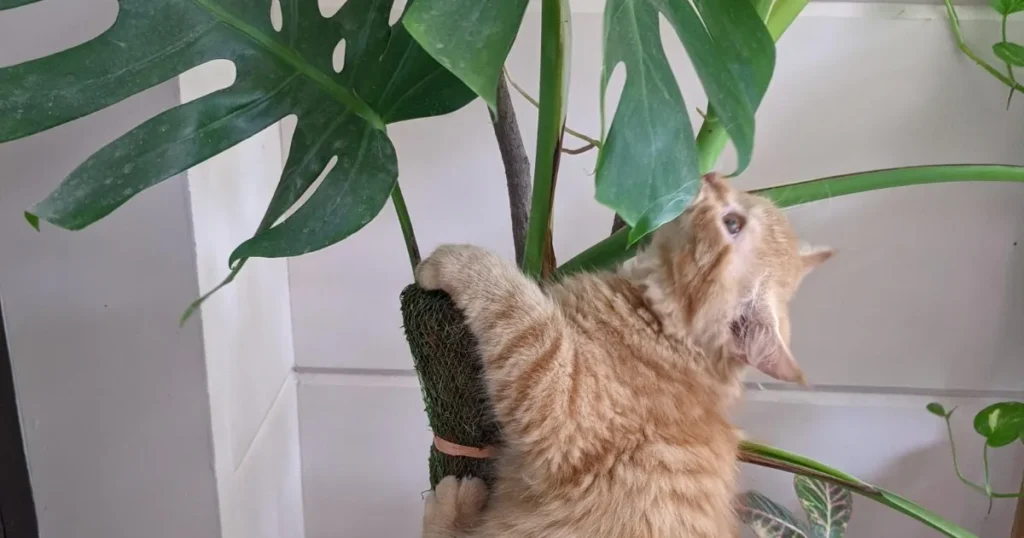
The good news? Most pets quickly learn their lesson after one disagreeable taste of a monstera. The leaves don’t tend to be particularly appetizing to most animals.
However, it’s still wise to place monsteras out of reach from determined nibblers or keep them in hanging baskets.
Monitor your pet closely if they do ingest part of the plant, and contact your veterinarian if symptoms escalate or persist for more than a day. They may recommend bringing your pet in for evaluation and iv fluids if severe vomiting or diarrhea develops.
Avoiding house plants altogether isn’t realistic for most pet owners, nor is it necessary. With some simple precautions like keeping delicate plants elevated or behind barriers, you can enjoy these tropical showstoppers while keeping your furry companions safe and healthy.
After all, appreciating nature’s beauty should bring joy—not regrets! A little planning allows you to create an aesthetically pleasing yet pet-friendly home.
You can visit YouTube for some help regarding this issue. Monstera is definitely not the plant that’s gonna kill your favorite, dog, or cat. However, the following might help you understand why having Monstera and pets in the same house should not bother you too much.
FAQs
For more intel, the following Q&A should be on some help.
Q: Are there any common houseplants that are more toxic than the monstera?
Yes, there are several houseplants considered more toxic than the monstera deliciosa. Some examples include lilies, oleander, azaleas, and dieffenbachia (dumb cane). These should be kept well away from pets due to their higher toxicity levels.
Q: How can I tell if my pet has nibbled on a toxic plant?
Signs that your pet may have ingested a toxic plant include vomiting, diarrhea, excessive drooling, lethargy, lack of appetite, and pawing at the mouth. If you notice these symptoms, bring them to the vet immediately.
Q: What should I do if my pet ingests a toxic plant?
If you suspect your pet has eaten part of a toxic houseplant, don’t wait for symptoms to appear. Contact your veterinarian, the ASPCA Animal Poison Control hotline, or the emergency pet clinic immediately for advice on how to proceed.
Final Say
Monsteras might not be the tastiest treat for your furry or feathered friend, but the good news is they’re unlikely to cause serious harm. By keeping your Monstera out of reach and providing alternative nibbling options, you can ensure your plant and pet thrive happily in your home.
Remember, a little supervision goes a long way in creating a harmonious multi-species household!


